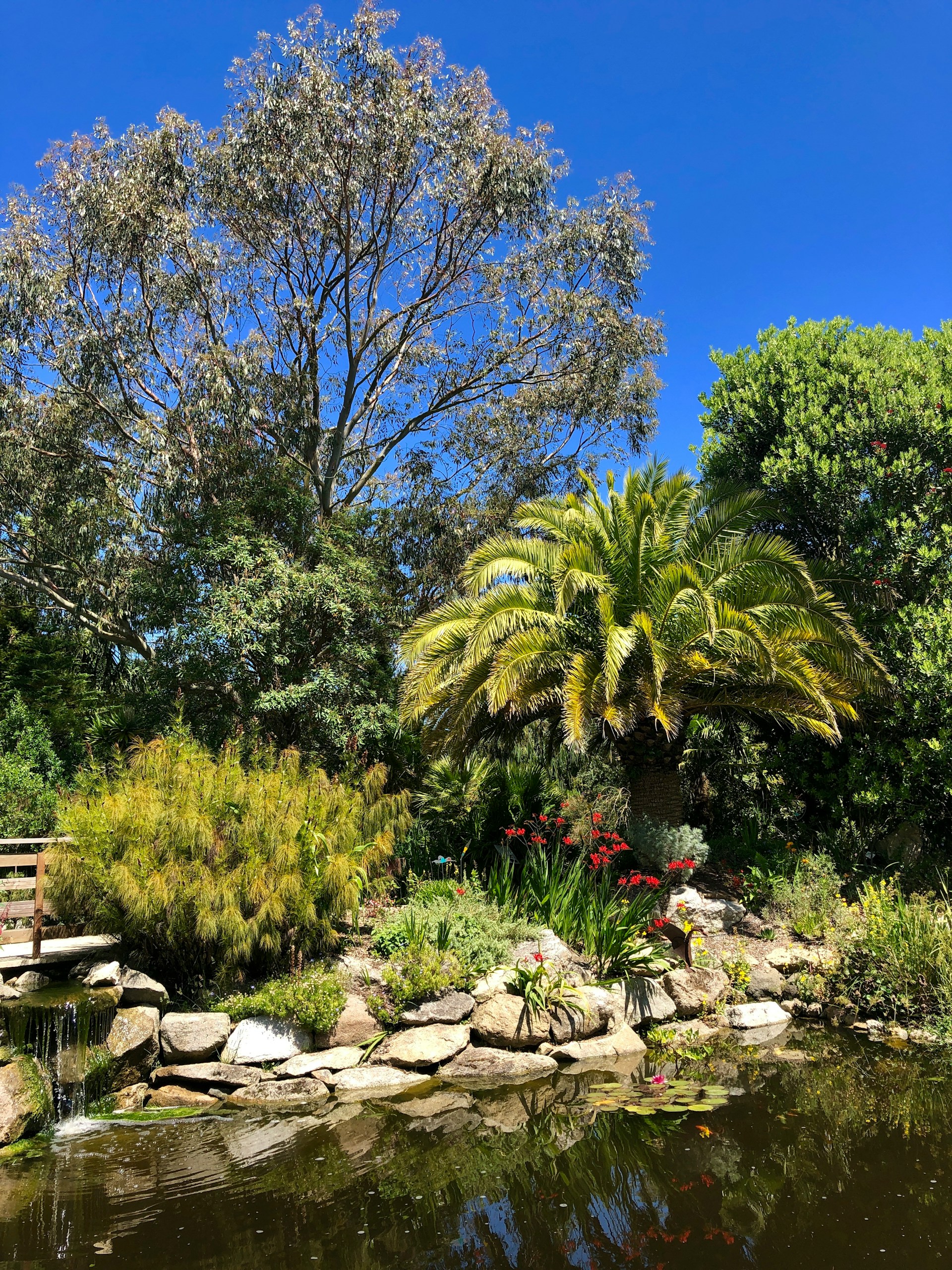
The allure of tropical landscapes has captivated human imagination for centuries. From the dense rainforests of the Amazon to the sun-kissed beaches of the Seychelles, these exotic locations are not just destinations but ecosystems teeming with biodiversity and natural beauty. The design of lush tropical landscapes in our own backyards and public spaces often draws inspiration from these far-off places, aiming to replicate their beauty, tranquility, and the sense of being enveloped in nature’s embrace. This article explores the principles, plants, and practices involved in creating such paradises, offering a window into the world of tropical landscape design.
Cover photo by Natálie Viklická
The Essence of Tropical Landscape Design
Tropical landscape design is an art form that seeks to harmonize with the natural environment while infusing it with cultural significance and aesthetic appeal. It involves understanding the unique characteristics of tropical climates, including high humidity, abundant rainfall, and diverse flora and fauna. The goal is to create a space that not only looks and feels like a tropical paradise but also supports the ecological balance and provides a respite for humans and wildlife alike.
Principles of Tropical Landscape Design
1. Layered Planting. A hallmark of successful tropical landscapes is the use of layering to create visual interest and simulate a natural environment. Plants are arranged in layers from tall trees and shrubs down to ground covers, each contributing to the overall composition. This layering not only looks appealing but also encourages biodiversity by providing different niches for various species.
2. Diverse Plant Selection. Tropical landscapes boast a vast array of plant life, from towering palms and lush ferns to vibrant flowers and exotic trees. Designers select plants that are native or well-adapted to the local climate to ensure their resilience and low maintenance. The use of both native and exotic species can create a unique ecosystem that is both beautiful and sustainable.
3. Water Features. Water plays a critical role in tropical landscapes, from natural streams to man-made pools and fountains. These features not only add an auditory dimension to the landscape with the soothing sound of running water but also support aquatic life and help maintain humidity levels.
4. Sustainable Practices. Eco-friendly practices are integral to tropical landscape design. Permeable paving, rain gardens, and xeriscaping reduce the need for irrigation while minimizing runoff and erosion. The use of organic fertilizers and natural pest control methods protects the environment and promotes healthy plant growth.
5. Lighting and Textures. To create a mood that is both inviting and mysterious, tropical landscapes often incorporate lighting strategies that highlight the lush foliage and textural contrasts. Pathway lights, tree wraps, and spotlights on unique plants can transform a landscape into an enchanting environment, especially during evening gatherings or quiet reflection.
Inspirational Exotic Locations
1. The Amazon Rainforest. Often referred to as the world’s largest tropical rainforest, the Amazon is a biodiversity hotspot with a rich tapestry of plant life. Its design principles focus on the use of native species that thrive in high humidity and can create a dense, shady canopy that mimics the forest’s atmosphere.
2. The Gardens of Bali. Bali’s sacred and public gardens are masterpieces of tropical landscape design, blending Hindu philosophies with lush greenery. The use of Balinese sandstone, intricate statues, and koi ponds adds a cultural dimension to the natural beauty of the plants.
3. The Exumas in the Bahamas. Known for their crystal-clear waters and the famous swimming pigs, the Exumas offer a vision of tropical paradise with its white sandy beaches and mangrove forests. The design here emphasizes the integration of coastal elements, such as dunes and sea oats, with tropical plants to create a harmonious transition from land to sea.
4. The Botanic Gardens of Mauritius. These gardens showcase the island’s unique blend of African, Indian, and European influences, with a focus on endemic species. They serve as a living museum that preserves the native flora and educates visitors about its importance.
Plants That Define Tropical Landscapes
1. Palms. From the majestic coconut palm to the delicate areca palm, these trees are synonymous with tropical landscapes. They provide both structural interest and functional shade.
2. Bromeliads. These epiphytes add a burst of color and texture, often thriving on other trees without harming them. They can store water, which supports a micro-ecosystem of its own.
3. Heliconias. These tropical beauties come in a variety of shapes, sizes, and colors, attracting hummingbirds and adding vibrancy to any landscape.
4. Orchids. Known for their exotic blooms, orchids are both stunning and symbolic, often representing love and beauty. They require specific conditions but reward the attentive gardener with breathtaking displays.
5. Ferns. With their lush, green fronds, ferns add a sense of old-world charm to tropical landscapes and provide habitat for various insects and birds.
Challenges in Tropical Landscape Design
Tropical landscape design is not without its challenges. Climate change, invasive species, and overuse of resources are significant concerns that designers must address. The need for sustainability is paramount, ensuring that these landscapes not only look beautiful but also contribute positively to the environment and local communities.
Conclusion
Designing lush landscapes inspired by exotic locations is a complex yet rewarding endeavor. It requires a deep understanding of the tropical ecosystem, a commitment to sustainable practices, and an appreciation for the beauty and diversity of tropical flora. By incorporating the principles, plants, and cultural elements from around the world, landscape designers can create their own tropical paradises that offer both respite and inspiration.
As we continue to develop our cities and communities, let us strive to integrate these natural wonders into our surroundings. Tropical landscapes serve as a reminder of nature’s intrinsic value and our responsibility to protect it. Through thoughtful design, we can bring a slice of paradise closer to home, providing not just an oasis for ourselves but also vital habitats for countless species that share our planet.
In the end, tropical landscape design is more than just arranging plants; it’s about creating an environment that tells a story, evokes emotions, and fosters connection with the natural world. It’s about transforming ordinary spaces into extraordinary places where we can all find a bit of that exotic, tropical magic right in our own backyards.


